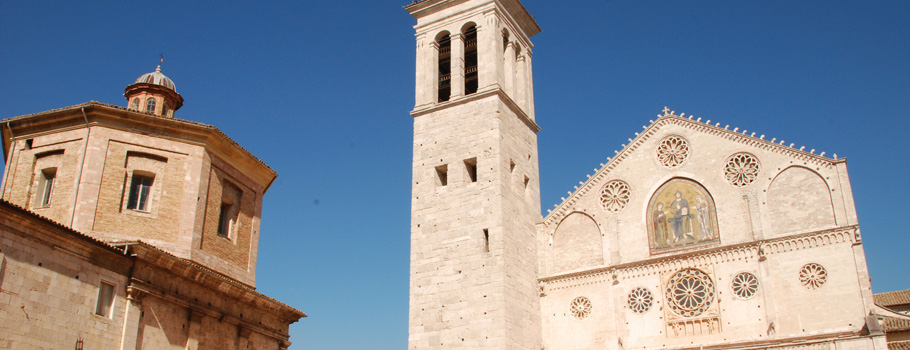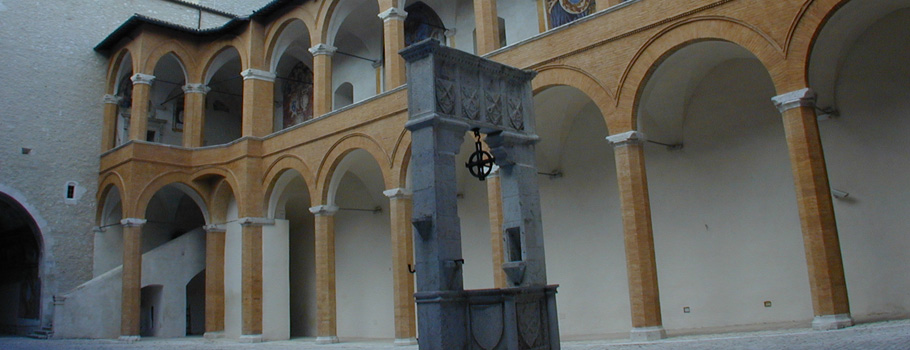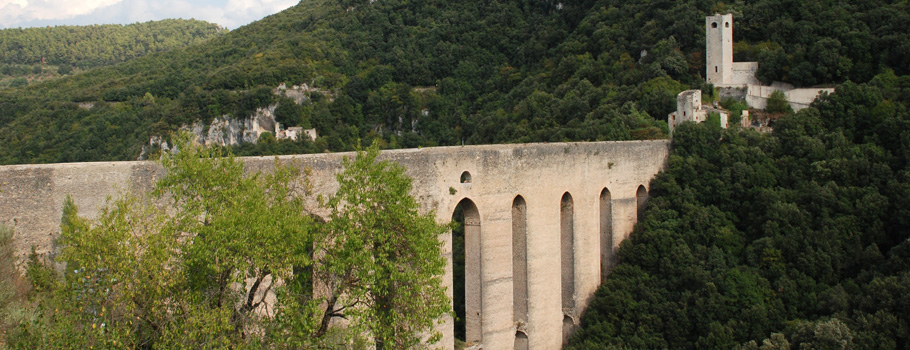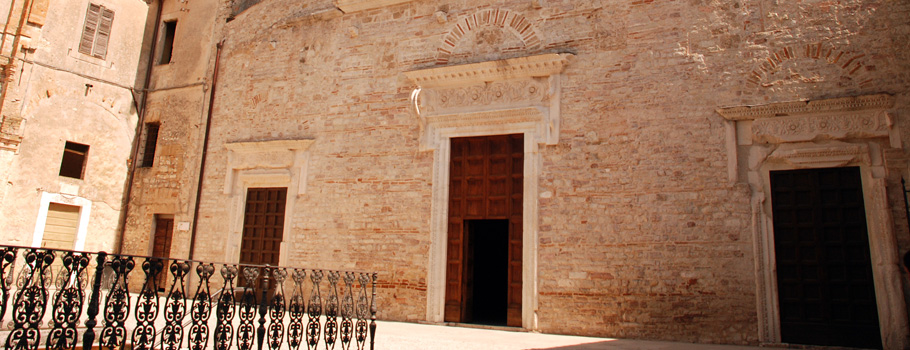



Monuments
Il Duomo
The present building was rebuilt in the late twelfth century, replaced the ancient cathedral of the Bishop of Santa Maria, erected on the site of a primitive Christian temple dedicated to Mars before.
The grand Romanesque facade, preceded by a sixteenth-century portico encloses the precious mosaic of Solsterno (1207) and a theory of Umbrian Romanesque marble workers rose by the second half of the twelfth century. The interior, the result of an overall transformation of the seventeenth century, houses the fresco cycle of the Life of the Virgin Fra Filippo Lippi (1467-1469) and the chapel Eroli work of Pinturicchio. In addition to the many altarpieces, we report the Chapel of the Relics of the Holy Icons, inside which is the small table which tradition says was donated by Frederick Barbarossa to the city as a sign of Pacification, and the rare Cross painted by Alberto Sotio (1187).
La Rocca Albornoziana
It was built at the behest of Pope Innocent VI in the sixties of the fourteenth century in order to strengthen the defense system and control over the vast and unruly domain of the church. The towering structure, designed by Matthew Gattaponi, around the two hinges, hinges around two majestic courtyard and weapons in a complex system, and angular towers joined together by high defensive walls. Recent renovations have also allowed the recovery of so-called "double pint", a room adorned with a fresco cycle of the subject of the most chivalrous and courteous significant central Italy.
Il Ponte delle Torri
Work of the late thirteenth century, was built to carry water to the city of Spoleto Monteluco perhaps at an earlier age structure similar to Roman times. Perhaps owes its name because it guarded by towers at the ends of the two fortresses (castle and fortification of the Mills), or the appearance of turreted towers.
Nine in number, connected by arches, and ogive of different sizes, the two stations are empty and practicable, perhaps for defensive purposes.
Basilica of San Salvatore
(Late seventh century. - Mid eighth century.)
The basilica has a plant with three naves.
Characteristic element of the interior, which has lost almost all of the decoration in stucco, is the rich entablature with Doric frieze set on Corinthian Doric columns in the nave and the presbytery. The original rich decoration of the façade, window frames remain and the three portals worked with elaborate classical motifs executed with supreme skill.
Basilica candidate serial site UNESCO - World Heritage of Humanity "ITALY Longobardorum" CENTERS OF POWER AND OF WORSHIP (568-774 AD)
The church of St. Peter
Reliable historical sources attest that the church was erected on the site of an older building of the fifth century. The present form dates from the late twelfth and early thirteenth century, the most flourishing period of the Romanesque architecture of Spoleto.
Witness the remarkable façade, the only survivor after the renovations that, in the seventeenth century, it spread on the inside. In the surveys, as well as scenes from the life of the saint, are illustrated with clear and concise intent didactic episodes inspired by the medieval short story (for example: the lion and the woodsman, the fox and fake dead crows, wolves student and mutton).



